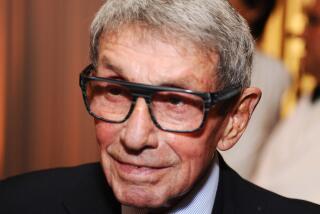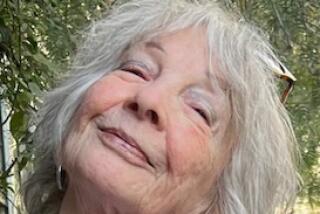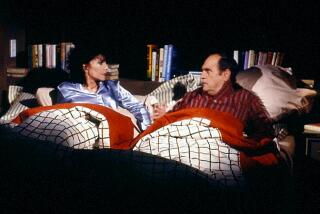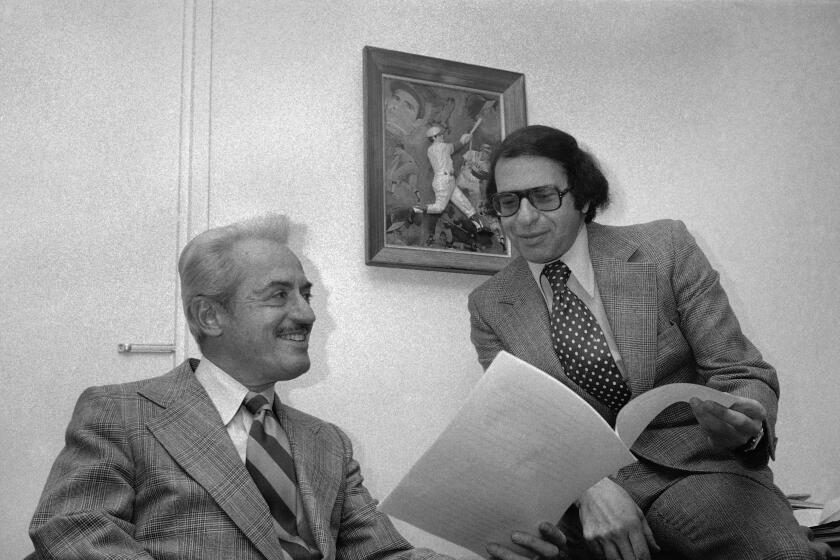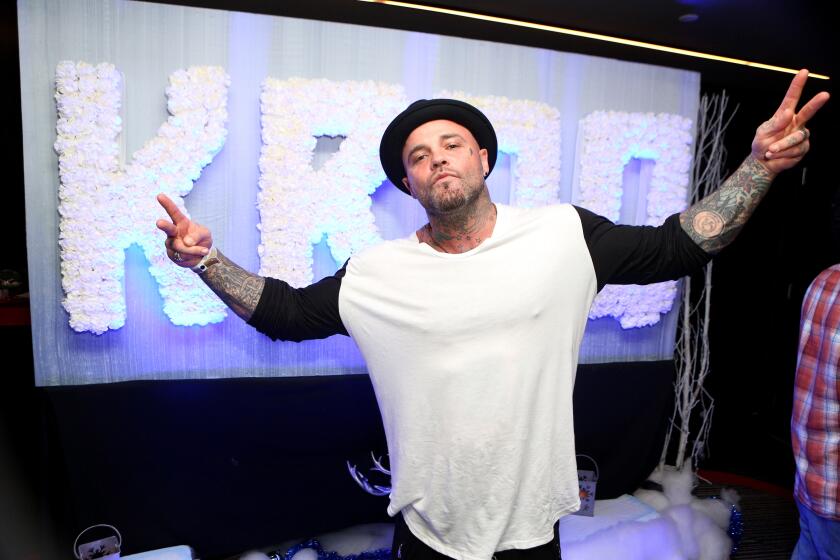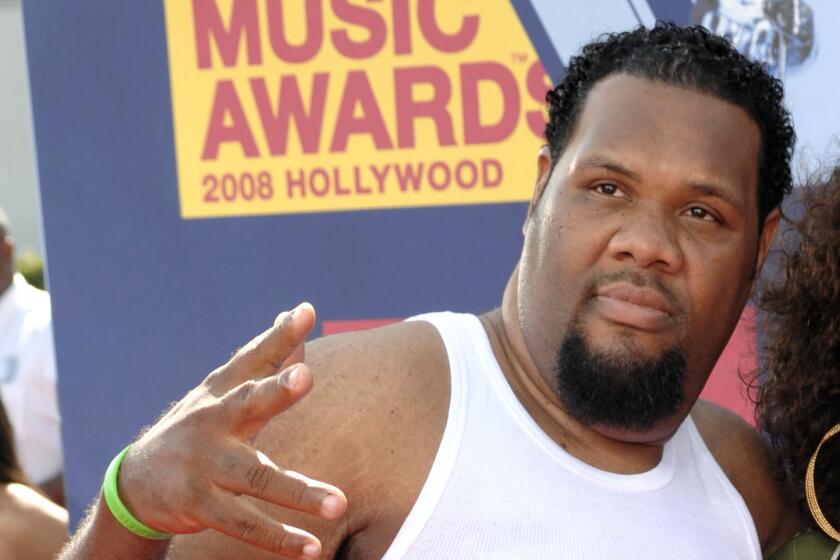Paul Mazursky dies at 84; director chronicled trends of ‘60s and ‘70s
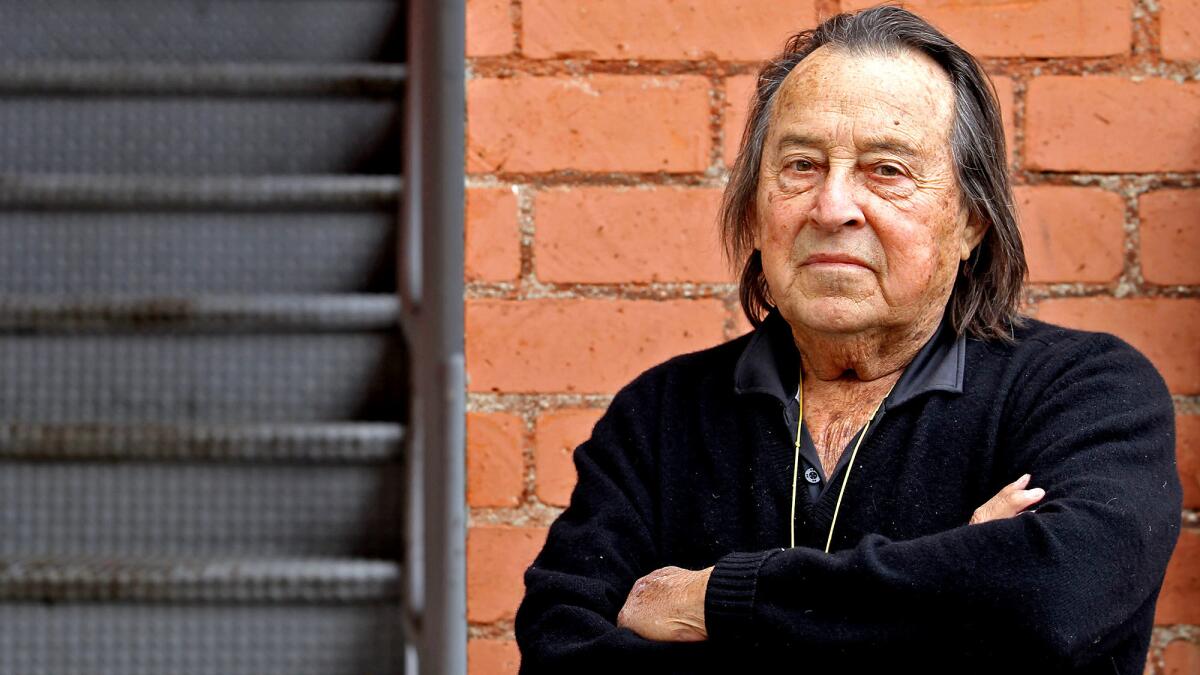
Paul Mazursky, the Oscar-nominated writer-director who excelled at mining the urban middle class for laughs as well as tears in such movies as “Bob & Carol & Ted & Alice,” “Blume in Love,” “An Unmarried Woman” and “Down and Out in Beverly Hills,” died Monday at Cedars-Sinai Medical Center in Los Angeles. He was 84.
The cause was pulmonary cardiac arrest, family spokeswoman Nancy Willen said.
A gentle satirist of contemporary society, Mazursky at his best chronicled the social trends of the late 1960s and ‘70s, including the era’s touchy-feely self-improvement fads, drug experimentation and shifting rules for love and sex.
In the process he created characters memorable for their struggles and vanities: the well-heeled couples in his 1969 directorial debut “Bob & Carol & Ted & Alice” who believe spouse-swapping is the cure for their hang-ups; the divorce lawyer in “Blume in Love” who thinks sexual freedom is great until his wife wants it; and the divorcee in “An Unmarried Woman” who steps gingerly into the singles scene after 15 years of what she thought had been a happy marriage.
Like Woody Allen, Mazursky wrote and directed most of his 17 films and acted in nearly all of them. His acting credits spanned six decades, from a leading role in Stanley Kubrick’s first feature in 1953 to voicing a musical bunny in “Kung Fu Panda 2” in 2011. He also appeared in the HBO series “Curb Your Enthusiasm” and “The Sopranos.”
His experiences in front of the camera gave him a special affinity for actors’ rhythms and a preference for long takes that allowed them room to develop their characters.
Critic Molly Haskell compared Mazursky to Ingmar Bergman in the caliber of performances he coaxed out of his leading women in particular.
“They allow his camera to seek out and find subtleties of expression and echoes of a complex, sensual intelligence that never surface in their work for other directors,” Haskell wrote in New York magazine in 1978.
He made his share of flops, including “The Pickle” (1993), which was so bad Columbia wouldn’t show it to most critics. That movie was bookended by the poorly reviewed “Scenes From a Mall” (1991) and “Faithful” (1996), his last feature. He also made a documentary called “Yippee” (2006), about Hasidic Jews in Ukraine.
His feature films were frequently criticized for being sentimental.
“His specialty is to take a core of sentimental goo and coat it with either bittersweet nostalgia or crude jokes — preferably both,” critic John Simon wrote in the National Review in 1986.
But Mazursky dismissed the barbs, arguing, as he did in the Atlantic in 1980, that “my movies aren’t sentimental, they just have sentiment.”
He received his last critical raves for “Enemies: A Love Story” (1989), adapted with Roger L. Simon from an Isaac Bashevis Singer story about a Holocaust survivor who winds up in America with three wives. It brought Mazursky his fourth screenwriting nomination, after “An Unmarried Woman,” “Harry and Tonto” and “Bob & Carol & Ted & Alice.”
Born Irwin Mazursky in New York City on April 25, 1930, he was the only child of David, a laborer, and his wife, Jean, a movie lover who let her son skip school so they could watch two double features in one day. “By the time I was 12,” Mazursky told People magazine in 1986, “I was already dreaming of being an actor. I’d go into the bathroom in our house, the only place you could be alone, and do imitations of Errol Flynn and Humphrey Bogart.”
While a student at Brooklyn College he was cast as a psychopath in “Fear and Desire,” the 1953 film that marked Stanley Kubrick’s directorial debut. He changed his first name to Paul.
That year he also married Betsy Purdy, with whom he had two children.
In addition to his wife, he is survived by their daughter Jill Mazursky, four grandchildren and a great-grandchild. Their daughter Meg died of cancer in 2009.
After the Kubrick movie, Mazursky studied Method acting with Lee Strasberg. One of his early roles was a juvenile delinquent in “Blackboard Jungle” (1955).
In 1959, he moved his family to Los Angeles and joined the improv group Second City. When it closed, he teamed up with Second City alum Larry Tucker to write gags for CBS’ “The Danny Kaye Show.” He and Tucker also co-wrote the 1966 pilot for “The Monkees,” the TV series about a struggling rock band, but their work was uncredited at the time.
Dissatisfied with television, Mazursky began taking classes on film editing at USC and fantasized about becoming a director.
He and Tucker shared an office on a stretch of Sunset Boulevard hopping with ‘60s bohemians. The setting inspired their first screenplay, “I Love You, Alice B. Toklas” (1968), a romantic comedy starring Peter Sellers as a lawyer who drops out of his conventional life after ingesting a marijuana-infused brownie.
Mazursky got his chance to direct with his next project. He had taken his wife to Esalen, the Big Sur retreat where members of the counterculture went to find their inner selves. The experience became grist for “Bob & Carol & Ted & Alice.” Co-written with Tucker, the film opens with a couple played by Robert Culp and Natalie Wood, who return from an Esalen-like retreat with a new awareness they want to share with another couple, played by Dyan Cannon and Elliott Gould.
The movie made Gould a star, resuscitated Wood’s career and was a box-office and critical hit; Pauline Kael, writing in the New Yorker, called it “the liveliest American comedy so far this year.” It catapulted Mazursky onto the A-list of directors.
He was given carte blanche for his next picture, “Alex in Wonderland” (1970), which stars Donald Sutherland as a director who can’t decide what to do with his life after his first hit movie. Mazursky meant it as an homage to “81/2,” the autobiographical masterpiece by Federico Fellini, whom he idolized; Fellini even makes a cameo appearance. Mazursky gave himself the role of a groovy producer with wacky movie ideas.
Critics liked “Alex,” but commercially it bombed. Adding to Mazursky’s distress was his failure to find a studio to back “Harry and Tonto.”
Feeling like a misunderstood artist, Mazursky moved to Italy for a while but found expatriate life unsatisfying.
When he returned to the U.S. some months later, he wrote a scene about “a guy sitting in a cafe in Italy trying to figure out what the hell he is doing there,” Mazursky told People. That idea bloomed into the script for “Blume in Love” (1973), which starred George Segal as a man who realizes he is in love with his ex-wife, played by Susan Anspach.
It won admiring reviews from critics such as Roger Ebert, who wrote that Mazursky “seems to have pulled off what everybody is always hoping for from Neil Simon: a comedy that transcends its funny moments, that realizes we laugh so we may not cry, and that finally is about real people with real desperations.”
Back on the top of the Hollywood heap, Mazursky finally was able to make “Harry and Tonto” (1974), a serious comedy about a 72-year-old man who goes on the road after being evicted from his New York City apartment. Lauded for its humanistic portrait of aging, it succeeded financially and made Art Carney of TV’s “The Honeymooners” a movie star and best actor Oscar winner.
Mazursky followed with the highly praised, semi-autobiographical “Next Stop, Greenwich Village” (1976), about a Brooklyn boy in the early 1950s who moves to the Village to chase his acting dreams, and “An Unmarried Woman” (1978), which garnered three Oscar nominations including best actress for Jill Clayburgh, best picture and best screenplay.
After the disappointments of “Willie and Phil” (1980) and “Tempest” (1982), his next hit was “Moscow on the Hudson” (1984), which showcased Robin Williams as a Russian musician who defects in the middle of a Bloomingdale’s department store.
“Down and Out in Beverly Hills” (1986) was Mazursky’s greatest commercial success. A farce inspired by the 1932 Jean Renoir film “Boudou Saved From Drowning,” it concerns a wealthy couple (Bette Midler and Richard Dreyfuss) who live in a mansion with a dog that has its own psychiatrist. Their posh life is disrupted by a homeless man (Nick Nolte) who tries to drown himself in their pool. Sympathizing with his plight, the couple invite him to move in.
The purpose of the film was “to reflect on the absurdity of having it all and still having nothing,” Mazursky told the Chicago Tribune in 1986.
A longtime resident of Beverly Hills, Mazursky said he was poking fun at himself, too.
“I find it impossible to spend much time with someone who doesn’t have a real sense of humor,” he told People magazine. “Humor is not just a way of looking at life. It’s the way you experience things. Nobody lives life free of pain, but you can get past the pain with humor. It’s what separates me from some very nice people who simply don’t get the joke.”
Twitter: @ewooLATimes
More to Read
Start your day right
Sign up for Essential California for the L.A. Times biggest news, features and recommendations in your inbox six days a week.
You may occasionally receive promotional content from the Los Angeles Times.
